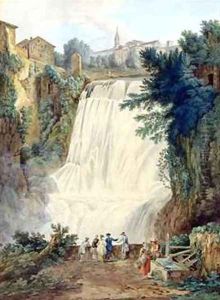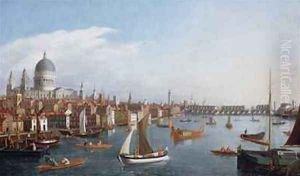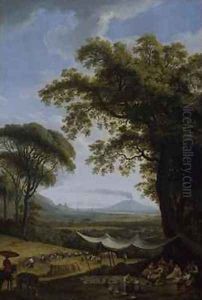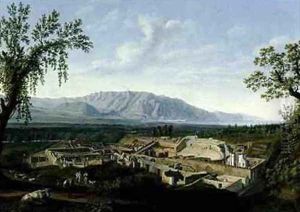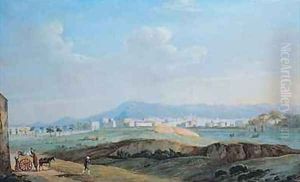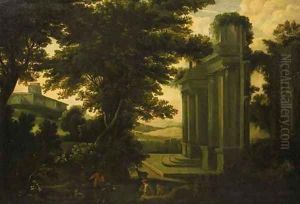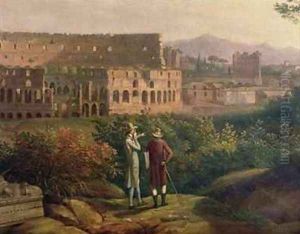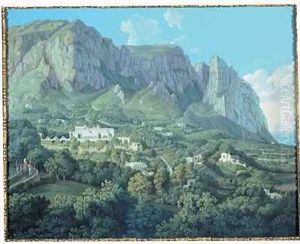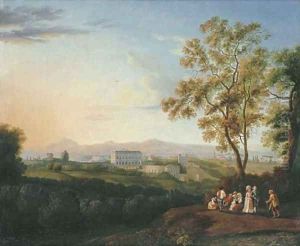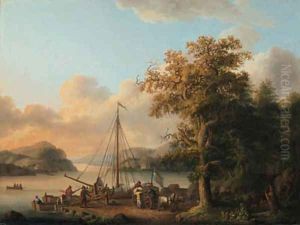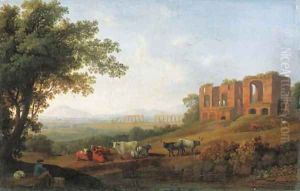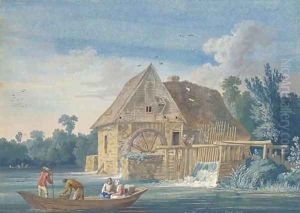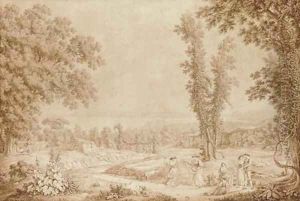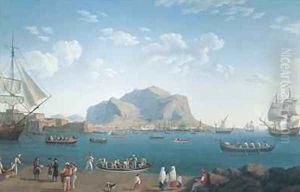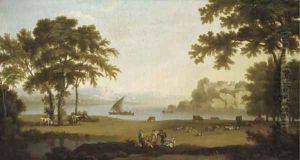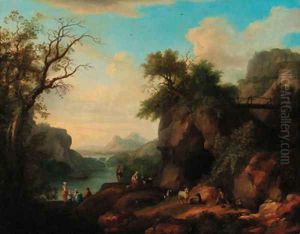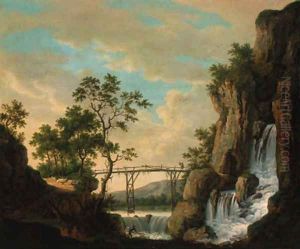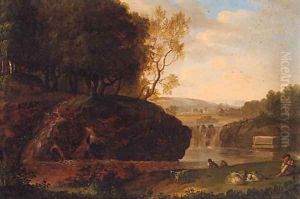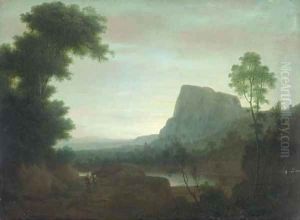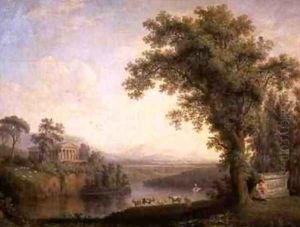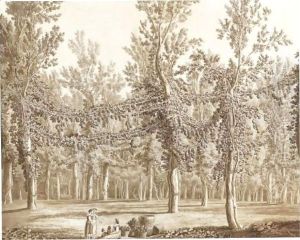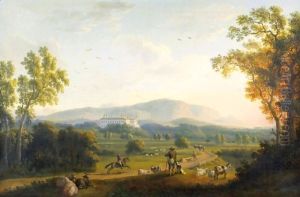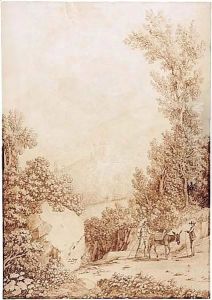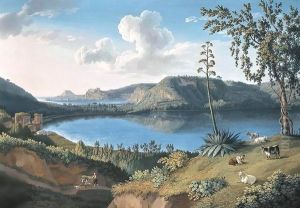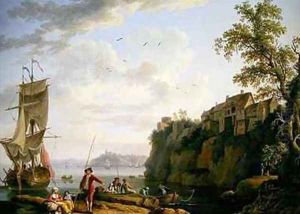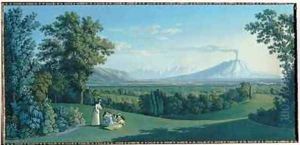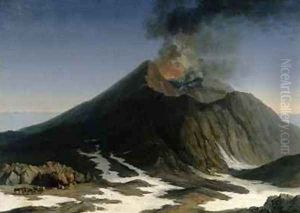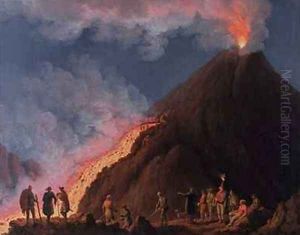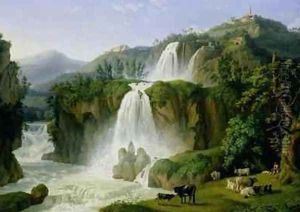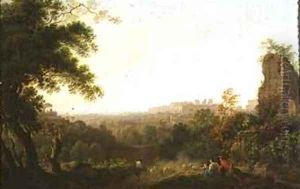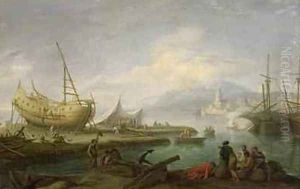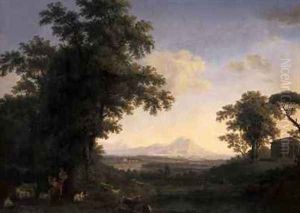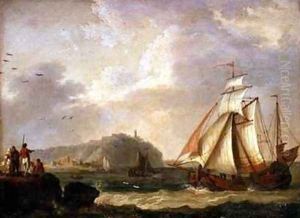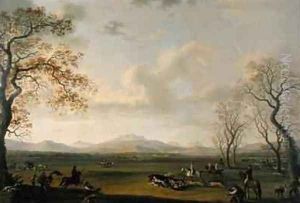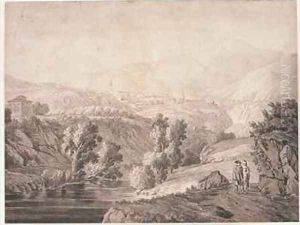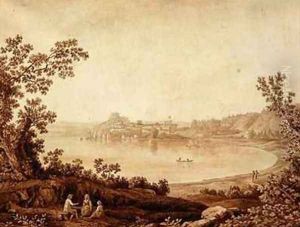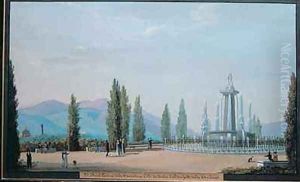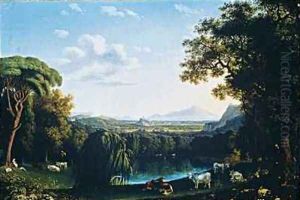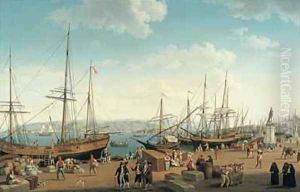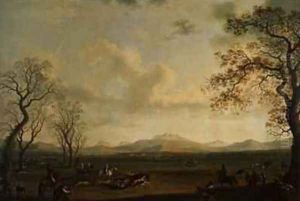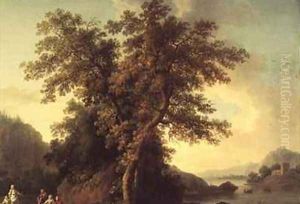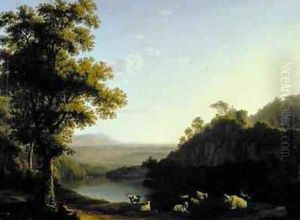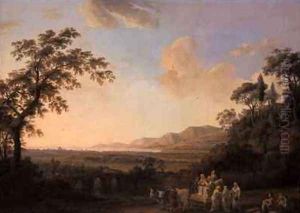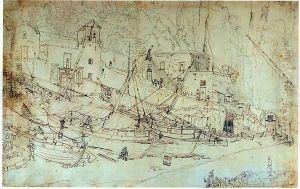Jakob Philippe Hackert Paintings
Jakob Philippe Hackert, born on September 15, 1737, in Prenzlau, Brandenburg-Prussia, was a prominent landscape painter known for his portrayal of idyllic landscapes and his significant role in the development of plein air painting. Hackert's early training began with his father, who was a painter himself, and later with landscape painter Adrian Zingg in Berlin. His talent and dedication to art led him to further his studies in Paris and then Rome, where he settled in 1768.
In Rome, Hackert became part of the thriving art community and was influenced by the classical landscape tradition of artists like Claude Lorrain. He traveled extensively throughout Italy, capturing the picturesque countryside, the ruins of antiquity, and the coastal scenes in his paintings. His work was characterized by meticulous attention to detail, balanced compositions, and a harmonious color palette, which garnered him a significant following among art patrons, including European nobility and the Grand Tour travelers.
Hackert's reputation grew, and he was appointed as the painter to the court of Ferdinand IV of Naples in 1786. During his time in Naples, he documented the landscapes and historical sites of southern Italy. His work also includes depictions of the dramatic natural events of the time, such as the eruption of Mount Vesuvius.
The Napoleonic Wars, however, brought turmoil to Hackert's career. With the French invasion of Italy, he lost his position and his patrons. He eventually moved to San Pietro di Careggi near Florence, where he continued to paint but also focused on etching and printmaking. Hackert's later years were spent organizing his works and instructing young artists, including his biographer and fellow landscape painter, Wilhelm Tischbein.
Jakob Philippe Hackert's legacy endures through his influence on the plein air tradition and his detailed records of the Italian landscape of the 18th century. He died on April 28, 1807, in San Pietro di Careggi. His works are held in many prestigious collections and continue to be admired for their historical value and artistic beauty.
